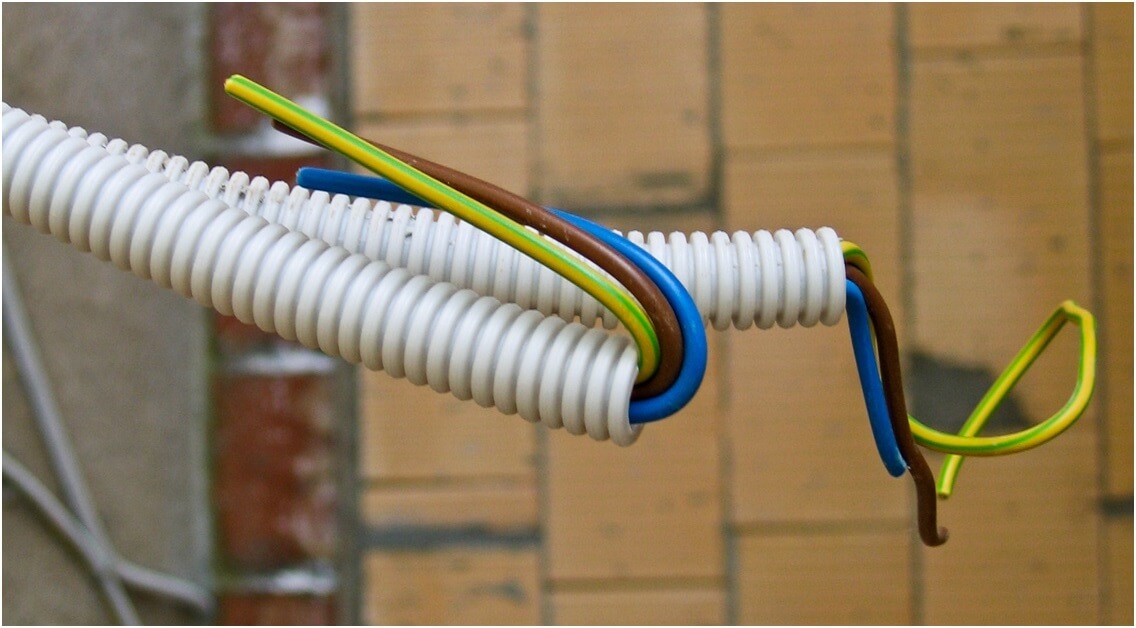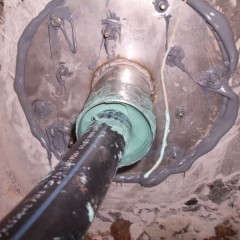How to route a cable through a wall according to the rules
Laying requirements
The requirements for this type of work are regulated by two main regulatory documents. The first source is PUE, which should always be consulted when it comes to the installation of electrical installations. The passage of the cable through the walls is said at different points, for example in chapter 2.1. paragraph 2.1.58. The second document is SNiP 3.05.06-85 (in paragraph 3.18), which describes the norms for the construction and installation of electrical devices. Information on this issue is also contained in the Federal Law of July 22, 2008 N 123-ФЗ
“Technical regulation on fire safety requirements”, Article 82, formulating fire safety requirements.
For the production of construction and installation works, an appropriate project is required. If it is planned to lay a cable or wire through the walls, the project should contain an architectural and construction part. The holes that a wall or partition should have, through which it is planned to lay wires and cables, should be indicated on the project drawings.
The openings (openings) in the walls, partitions, ceilings and foundations that are carried out in accordance with the project should not have framed areas that could collapse during operation. In general, cable routing through walls should meet the following requirements:
- laying should provide the ability to replace wires and cables during operation.
- during wiring installation, it must be ensured that it is impossible to spread fire, smoke and moisture from one room to another through the mounting openings.
The fulfillment of these conditions is ensured by observing the following rules:
- Laying cables and wiring through fireproof walls and ceilings is carried out in pipes, ducts or directly in openings. At the same time, in the openings, without the use of additional protection, only a protected (armored) cable can be laid. About, how to conduct wiring in pipes, we told in a separate article.
- If the wall, partition or ceiling is made of combustible material, the conductor products are laid in steel pipes.
- The space between wires and pipes or ducts, as well as all backup openings and ducts, are sealed. About, how to seal cable entryWe also told.
The material used to seal the openings should be easily removable if necessary. The fire resistance of the sealant cannot be inferior to the fire resistance of the wall, partition and ceilings. Sealing with a sealing material is made on both sides of pipes, ducts, openings.
If the cable passage through the wall is made in a pipe segment, its bending radius, if any, should not exceed the permissible bending radius of the used brand of conductor (this parameter is indicated in the technical specifications).
Mounting technology
First, consider how to draw a power cable or wire through the wall of a wooden house or structure from a log.
The first step is to determine the entry point where the wall is drilled. The diameter of the hole is determined based on the thickness of the steel pipe into which the conductor will be placed. Before pulling the cable, you should carefully file its edges with a file to remove sharp burrs that could damage the insulation. For additional protection of the cable line, it is better to lay it in the corrugation.
After installation, the pipe filling requirements must be met. In this case, you can use the asbestos cord by wrapping it in a cable and hammering it tightly into the pipe on both sides. The photo shows a wooden wall and the laying of a power cable through it:
How to conduct wiring through the wall and wiring is shown in the photo below:
Where:
- Steel pipe.
- Distribution box.
- Asbestos cement lining.
- Cable channel.
- Corrugation.
- Asbestos cement lining.
- Dual outlet.
For example, options are shown how to route a cable through a brick wall:
The sequence of work is as follows:
- An opening of the required size is being made in the brick wall.
- A section of corrugation (sleeve) is inserted into the prepared opening.
- A heat-shrinkable seal is installed on the pipe.
- The space between the sleeve and the opening is filled with mortar.
- A cable or wire, previously placed in a corrugated pipe, is passed through the sleeve.
- The space between the corrugation and the sleeve is sealed with one of the materials that meet the requirements of the rules.
- By thermal action (for example, using a hairdryer), the seal shrinks, up to the complete sealing of the entry point of the electrical conductor into the sleeve.
If the wall is concrete, the technology is the same as for a brick one. The photo below shows an example of laying a cable through a concrete wall:
For industrial use, the technology of inflatable cable sealing is of interest. The sealant is an inflatable chamber made of metalized laminate. The cable line is wrapped with a sealant on which sealant is applied. Then the chamber is inflated, filling the passage, after which the helium valve is locked securely. How the passage is filled is shown in the photo:
That's the whole technology of laying a cable through a wall of wood, concrete and brick. As you can see, laying a line through obstacles in an apartment or a house is not particularly difficult, the main thing is to be familiar with the requirements for wiring!
It will be useful to read:














